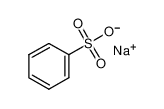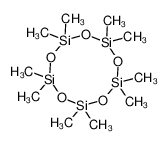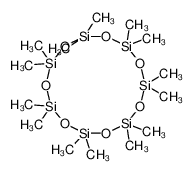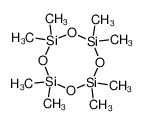1.Identification
1.1 GHS Product identifier
| Product name | bromomethane |
|---|
1.2 Other means of identification
| Product number | - |
|---|---|
| Other names | Pestmaster |
1.3 Recommended use of the chemical and restrictions on use
| Identified uses | For industry use only. Volatile organic compounds |
|---|---|
| Uses advised against | no data available |
1.4 Supplier's details
| Company | MOLBASE (Shanghai) Biotechnology Co., Ltd. |
|---|---|
| Address | Floor 4 & 5, Building 12, No. 1001 North Qinzhou Road, Xuhui District, Shanghai, China |
| Telephone | +86(21)64956998 |
| Fax | +86(21)54365166 |
1.5 Emergency phone number
| Emergency phone number | +86-400-6021-666 |
|---|---|
| Service hours | Monday to Friday, 9am-5pm (Standard time zone: UTC/GMT +8 hours). |
2.Hazard identification
2.1 Classification of the substance or mixture
Gases under pressure: Compressed gas
Acute toxicity - Oral, Category 3
Skin irritation, Category 2
Eye irritation, Category 2
Acute toxicity - Inhalation, Category 3
Specific target organ toxicity – single exposure, Category 3
Germ cell mutagenicity, Category 2
Specific target organ toxicity – repeated exposure, Category 2
Hazardous to the aquatic environment, short-term (Acute) - Category Acute 1
Hazardous to the ozone layer, Category 1
2.2 GHS label elements, including precautionary statements
| Pictogram(s) |     |
|---|---|
| Signal word | Danger |
| Hazard statement(s) | H301 Toxic if swallowed H315 Causes skin irritation H319 Causes serious eye irritation H331 Toxic if inhaled H335 May cause respiratory irritation H341 Suspected of causing genetic defects H373 May cause damage to organs through prolonged or repeated exposure H400 Very toxic to aquatic life H420 Harms public health and the environment by destroying ozone in the upper atmosphere |
| Precautionary statement(s) | |
| Prevention | P264 Wash ... thoroughly after handling. P270 Do not eat, drink or smoke when using this product. P280 Wear protective gloves/protective clothing/eye protection/face protection. P261 Avoid breathing dust/fume/gas/mist/vapours/spray. P271 Use only outdoors or in a well-ventilated area. P201 Obtain special instructions before use. P202 Do not handle until all safety precautions have been read and understood. P260 Do not breathe dust/fume/gas/mist/vapours/spray. P273 Avoid release to the environment. |
| Response | P301+P310 IF SWALLOWED: Immediately call a POISON CENTER/doctor/… P321 Specific treatment (see ... on this label). P330 Rinse mouth. P302+P352 IF ON SKIN: Wash with plenty of water/... P332+P313 If skin irritation occurs: Get medical advice/attention. P362+P364 Take off contaminated clothing and wash it before reuse. P305+P351+P338 IF IN EYES: Rinse cautiously with water for several minutes. Remove contact lenses, if present and easy to do. Continue rinsing. P337+P313 If eye irritation persists: Get medical advice/attention. P304+P340 IF INHALED: Remove person to fresh air and keep comfortable for breathing. P311 Call a POISON CENTER/doctor/… P312 Call a POISON CENTER/doctor/…if you feel unwell. P308+P313 IF exposed or concerned: Get medical advice/ attention. P314 Get medical advice/attention if you feel unwell. P391 Collect spillage. |
| Storage | P410+P403 Protect from sunlight. Store in a well-ventilated place. P405 Store locked up. P403+P233 Store in a well-ventilated place. Keep container tightly closed. |
| Disposal | P501 Dispose of contents/container to ... P502 Refer to manufacturer or supplier for information on recovery or recycling |
2.3 Other hazards which do not result in classification
none
3.Composition/information on ingredients
3.1 Substances
| Chemical name | Common names and synonyms | CAS number | EC number | Concentration |
|---|---|---|---|---|
| bromomethane | bromomethane | 74-83-9 | none | 100% |
4.First-aid measures
4.1 Description of necessary first-aid measures
General advice
Consult a physician. Show this safety data sheet to the doctor in attendance.
If inhaled
Fresh air, rest. Half-upright position. Artificial respiration may be needed. Refer immediately for medical attention.
In case of skin contact
Rinse skin with plenty of water or shower. ON FROSTBITE: rinse with plenty of water, do NOT remove clothes. Refer immediately for medical attention.
In case of eye contact
Rinse with plenty of water (remove contact lenses if easily possible). Refer immediately for medical attention.
If swallowed
Never give anything by mouth to an unconscious person. Rinse mouth with water. Consult a physician.
4.2 Most important symptoms/effects, acute and delayed
Methyl bromide is a dangerous cumulative poison with delayed symptoms of central nervous system intoxication that may appear as long as several months after exposure. High concentrations can produce fatal pulmonary edema. Chronic exposure can cause central nervous system depression and kidney injury. It may cause severe and permanent brain damage. Severe neurological signs may appear when there is a sudden exposure to high concentrations following continuous slight exposure. Methyl bromide has practically no odor or irritating effects and therefore no warning, even at hazardous concentrations. (EPA, 1998)
4.3 Indication of immediate medical attention and special treatment needed, if necessary
In a /methyl bromide/ poisoned man suffering from action myoclonus, the condition was controlled by diazepam (60 mg/day). However, because of severe somnolence, the treatment was changed to clonazepam at ... . This treatment was effective; the somnolence disappeared, & the myoclonus decreased conspicuously. Clonazepam produced mild improvement in another case with action myoclonus. Although /dimercaprol/ has been used for treating methyl bromide poisoning, there is no evidence that it was beneficial. Treatment of a poisoning case with acetylcysteine was concluded to be not harmful & possibly beneficial.
5.Fire-fighting measures
5.1 Extinguishing media
Suitable extinguishing media
Approach fire from upwind to avoid hazardous vapors and toxic decomposition products. Extinguish fire using agent suitable for surrounding fire. Use flooding quantities of water as fog. Use water spray to keep fire-exposed containers cool.
5.2 Specific hazards arising from the chemical
When heated to decomposition, it emits toxic fumes of bromides. Hazardous polymerization may not occur. (EPA, 1998)
5.3 Special protective actions for fire-fighters
Wear self-contained breathing apparatus for firefighting if necessary.
6.Accidental release measures
6.1 Personal precautions, protective equipment and emergency procedures
Use personal protective equipment. Avoid dust formation. Avoid breathing vapours, mist or gas. Ensure adequate ventilation. Evacuate personnel to safe areas. Avoid breathing dust. For personal protection see section 8.
6.2 Environmental precautions
Evacuate danger area! Consult an expert! Personal protection: complete protective clothing including self-contained breathing apparatus. Ventilation. NEVER direct water jet on liquid.
6.3 Methods and materials for containment and cleaning up
1. REMOVE ALL IGNITION SOURCES. 2. VENTILATE AREA OF SPILL OR LEAK. 3. STOP FLOW OF GAS. IF SOURCE OF LEAK IS A CYLINDER & LEAK CANNOT BE STOPPED IN PLACE, REMOVE THE LEAKING CYLINDER TO A SAFE PLACE IN THE OPEN AIR, REPAIR THE LEAK OR ALLOW THE CYLINDER TO EMPTY. 4. IF IN THE LIQ FORM, ALLOW TO VAPORIZE.
7.Handling and storage
7.1 Precautions for safe handling
Avoid contact with skin and eyes. Avoid formation of dust and aerosols. Avoid exposure - obtain special instructions before use.Provide appropriate exhaust ventilation at places where dust is formed. For precautions see section 2.2.
7.2 Conditions for safe storage, including any incompatibilities
Fireproof if in building. Separated from strong oxidants, aluminium and cylinders containing oxygen. Cool. Ventilation along the floor.Fireproof if in building. Separated from strong oxidants, aluminium and cylinders containing oxygen. Cool. Ventilation along the floor.
8.Exposure controls/personal protection
8.1 Control parameters
Occupational Exposure limit values
NIOSH considers methyl bromide to be a potential occupational carcinogen.
NIOSH recommends that occupational exposures to carcinogens be limited to the lowest feasible concentration.
Biological limit values
no data available
8.2 Appropriate engineering controls
Handle in accordance with good industrial hygiene and safety practice. Wash hands before breaks and at the end of workday.
8.3 Individual protection measures, such as personal protective equipment (PPE)
Eye/face protection
Safety glasses with side-shields conforming to EN166. Use equipment for eye protection tested and approved under appropriate government standards such as NIOSH (US) or EN 166(EU).
Skin protection
Wear impervious clothing. The type of protective equipment must be selected according to the concentration and amount of the dangerous substance at the specific workplace. Handle with gloves. Gloves must be inspected prior to use. Use proper glove removal technique(without touching glove's outer surface) to avoid skin contact with this product. Dispose of contaminated gloves after use in accordance with applicable laws and good laboratory practices. Wash and dry hands. The selected protective gloves have to satisfy the specifications of EU Directive 89/686/EEC and the standard EN 374 derived from it.
Respiratory protection
Wear dust mask when handling large quantities.
Thermal hazards
no data available
9.Physical and chemical properties
| Physical state | colourless gas with a chloroform-like odour |
|---|---|
| Colour | Colorless, transparent, easily liquified gas or volatile liquid |
| Odour | Usually odorless; sweetish, chloroform-like odor at high concentrations |
| Melting point/ freezing point | -93.7ºC |
| Boiling point or initial boiling point and boiling range | 3.56ºC |
| Flammability | Flammable Gas, but only in presence of a high energy ignition source.Combustible under specific conditions. Gives off irritating or toxic fumes (or gases) in a fire. |
| Lower and upper explosion limit / flammability limit | Lower flammable limit: 10% by volume; Upper flammable limit: 16% by volume |
| Flash point | -34ºC |
| Auto-ignition temperature | 537.22°C (USCG, 1999) |
| Decomposition temperature | no data available |
| pH | no data available |
| Kinematic viscosity | 0.397 cP at 0°C |
| Solubility | In water:1.522 g/100 mL |
| Partition coefficient n-octanol/water (log value) | log Kow = 1.19 |
| Vapour pressure | 1420 mm Hg ( 20 °C) |
| Density and/or relative density | 1.732 |
| Relative vapour density | 3.3 (20 °C, vs air) |
| Particle characteristics | no data available |
10.Stability and reactivity
10.1 Reactivity
no data available
10.2 Chemical stability
Heat /contributes to instability/.
10.3 Possibility of hazardous reactions
Non-flammable in air, but burns in oxygen.The gas is heavier than air and may accumulate in lowered spaces causing a deficiency of oxygen.METHYL BROMIDE is incompatible with metals, dimethyl sulfoxide, ethylene oxide. [Lewis]. Can give flammable products if mixed with potassium hydroxide, sodium hydroxide and other strong bases. Methyl bromide in a steel tank reacted with an aluminum tube (part of the level gauge) producing methyl aluminum bromide. When the latter was subsequently exposed to air, enough heat was produced to ignite the methyl bromide-compressed air mixture above the liquid layer. The ensuing explosion shattered the tank (also incompatible with zinc, magnesium, and alloys)[Chem. Eng. Pro. 58(8). 1962]. A reaction between methyl bromide and dimethyl sulfoxide resulted in an explosion that shattered the apparatus [NFPA 491M. 1991].
10.4 Conditions to avoid
no data available
10.5 Incompatible materials
Risk of fire and explosion on contact with aluminium, zinc, magnesium or oxygen.
10.6 Hazardous decomposition products
Decomposes on heating. This produces toxic and corrosive fumes including hydrogen bromide, bromine and carbon oxybromide. Reacts with strong oxidants. Attacks many metals in the presence of water. Attacks aluminium, zinc and magnesium. This produces pyrophoric compounds. This generates fire and explosion hazard.
11.Toxicological information
Acute toxicity
- Oral: LD50 Rat oral 214 mg/kg
- Inhalation: LC100 Rat inhalation 0.63 mg/l air/6 hr
- Dermal: no data available
Skin corrosion/irritation
no data available
Serious eye damage/irritation
no data available
Respiratory or skin sensitization
no data available
Germ cell mutagenicity
no data available
Carcinogenicity
Cancer Classification: Not Likely /to be Carcinogenic to Humans/
Reproductive toxicity
No information is available on the reproductive or developmental effects of methyl bromide in humans. Information from animal studies suggest that methyl bromide does not cause birth defects and does not interfere with normal reproduction except at high exposure levels. Chronic inhalation exposure of male animals has resulted in effects on the testes at high concentrations. Inhalation exposure of animals during gestation has not resulted in significant developmental effects, even when there was severe maternal toxicity.
STOT-single exposure
no data available
STOT-repeated exposure
no data available
Aspiration hazard
no data available
12.Ecological information
12.1 Toxicity
- Toxicity to fish: LC50; Species: Lepomis macrochirus (bluegill); Conditions: static bioassay, freshwater, 23°C, mild aeration applied after 24 hr; Concentration: 11 ppm for 96 hr
- Toxicity to daphnia and other aquatic invertebrates: EC50; Species: Daphnia magna (Water Flea); Conditions: freshwater, static, 19°C, pH 8.2, hardness 209.43 mg/L CaCO3, dissolved oxygen >6.5 mg/L; Concentration: 1700 ug/L for 48 hr; Effect: behavioral changes, general />99.9% purity
- Toxicity to algae: EC50; Species: Chlorella pyrenoidosa (Green Algae) exponential growth phase, 10000 cells/mL; Conditions: freshwater, static, 24°C, pH 7.7, hardness 54.06 mg/L CaCO3; Concentration: 2100-6700 ug/L for 24 hr; Effect: growth, general />99.9% purity
- Toxicity to microorganisms: no data available
12.2 Persistence and degradability
ANAEROBIC: Methyl bromide was anaerobically degraded in salt marsh sediments after chemical reaction with abundant free sulfide. The product of this nucleophilic substitution reaction was methanethiol, which underwent further chemical and bacterial reactions to form dimethyl sulfide(1).
12.3 Bioaccumulative potential
An estimated BCF of 3 was calculated in fish for methyl bromide(SRC), using a log Kow of 1.19(1) and a regression-derived equation(2). According to a classification scheme(3), this BCF suggests the potential for bioconcentration in aquatic organisms is low(SRC).
12.4 Mobility in soil
Reported Koc values for methyl bromide range from 9 to 22(1). According to a classification scheme(2), these Koc values suggest that methyl bromide is expected to have very high mobility in soil(SRC). The adsorption coefficient, Kd, for methyl bromide was below measurable for Greenfield sandy loam, Linne clay loam, and Carsetas loamy sand soils; Kd was equal to 0.2 for potting mix soil(3).
12.5 Other adverse effects
no data available
13.Disposal considerations
13.1 Disposal methods
Product
The material can be disposed of by removal to a licensed chemical destruction plant or by controlled incineration with flue gas scrubbing. Do not contaminate water, foodstuffs, feed or seed by storage or disposal. Do not discharge to sewer systems.
Contaminated packaging
Containers can be triply rinsed (or equivalent) and offered for recycling or reconditioning. Alternatively, the packaging can be punctured to make it unusable for other purposes and then be disposed of in a sanitary landfill. Controlled incineration with flue gas scrubbing is possible for combustible packaging materials.
14.Transport information
14.1 UN Number
| ADR/RID: UN1062 | IMDG: UN1062 | IATA: UN1062 |
14.2 UN Proper Shipping Name
| ADR/RID: METHYL BROMIDE with not more than 2% chloropicrin |
| IMDG: METHYL BROMIDE with not more than 2% chloropicrin |
| IATA: METHYL BROMIDE with not more than 2% chloropicrin |
14.3 Transport hazard class(es)
| ADR/RID: 2.3 | IMDG: 2.3 | IATA: 2.3 |
14.4 Packing group, if applicable
| ADR/RID: unknown | IMDG: unknown | IATA: unknown |
14.5 Environmental hazards
| ADR/RID: yes | IMDG: yes | IATA: yes |
14.6 Special precautions for user
no data available
14.7 Transport in bulk according to Annex II of MARPOL 73/78 and the IBC Code
no data available
15.Regulatory information
15.1 Safety, health and environmental regulations specific for the product in question
| Chemical name | Common names and synonyms | CAS number | EC number |
|---|---|---|---|
| bromomethane | bromomethane | 74-83-9 | none |
| European Inventory of Existing Commercial Chemical Substances (EINECS) | Listed. | ||
| EC Inventory | Listed. | ||
| United States Toxic Substances Control Act (TSCA) Inventory | Listed. | ||
| China Catalog of Hazardous chemicals 2015 | Listed. | ||
| New Zealand Inventory of Chemicals (NZIoC) | Listed. | ||
| Philippines Inventory of Chemicals and Chemical Substances (PICCS) | Listed. | ||
| Vietnam National Chemical Inventory | Not Listed. | ||
| Chinese Chemical Inventory of Existing Chemical Substances (China IECSC) | Listed. | ||
16.Other information
Information on revision
| Creation Date | Aug 14, 2017 |
|---|---|
| Revision Date | Aug 14, 2017 |
Abbreviations and acronyms
- CAS: Chemical Abstracts Service
- ADR: European Agreement concerning the International Carriage of Dangerous Goods by Road
- RID: Regulation concerning the International Carriage of Dangerous Goods by Rail
- IMDG: International Maritime Dangerous Goods
- IATA: International Air Transportation Association
- TWA: Time Weighted Average
- STEL: Short term exposure limit
- LC50: Lethal Concentration 50%
- LD50: Lethal Dose 50%
- EC50: Effective Concentration 50%
References
- IPCS - The International Chemical Safety Cards (ICSC), website: http://www.ilo.org/dyn/icsc/showcard.home
- HSDB - Hazardous Substances Data Bank, website: https://toxnet.nlm.nih.gov/newtoxnet/hsdb.htm
- IARC - International Agency for Research on Cancer, website: http://www.iarc.fr/
- eChemPortal - The Global Portal to Information on Chemical Substances by OECD, website: http://www.echemportal.org/echemportal/index?pageID=0&request_locale=en
- CAMEO Chemicals, website: http://cameochemicals.noaa.gov/search/simple
- ChemIDplus, website: http://chem.sis.nlm.nih.gov/chemidplus/chemidlite.jsp
- ERG - Emergency Response Guidebook by U.S. Department of Transportation, website: http://www.phmsa.dot.gov/hazmat/library/erg
- Germany GESTIS-database on hazard substance, website: http://www.dguv.de/ifa/gestis/gestis-stoffdatenbank/index-2.jsp
- ECHA - European Chemicals Agency, website: https://echa.europa.eu/






















